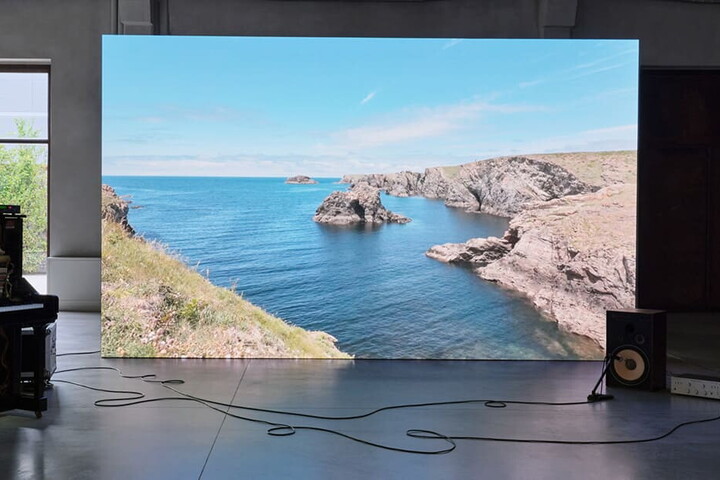Seven towers rise towards the sky: what is their secret? The answer emerged in the first of the “Six Conversations on Art”, a journey into Milan's artistic heritage organized by Marco Carminati, now in its third edition. The Seven Heavenly Palaces towering at Pirelli HangarBicocca, more simply known as the “Kiefer's towers”, were the protagonists of the first talk at Palazzo Reale on Wednesday 29 March. “This year, for the first time, the event is also open to contemporary art”, said the Tourism Councillor for the City of Milan, Roberta Guaineri. The event thus touched on one of the most visited and enigmatic works on the Milanese art scene, which from a simple temporary installation has become a permanent attraction admired by thousands of visitors each week. The Seven Heavenly Palaces sprung up in 2004 for the opening of Pirelli HangarBicocca and were intended to continue on a journey to other locations. But that was not to be: today they are a symbol of the contemporary artinstitution, and perhaps one of the works that best represents the increasingly solid link between the city and contemporary art, symbolised by the Pirelli HangarBicocca space.

Behind the mystery of the seven towers is Anselm Kiefer, the German artist self-defined by this installation. “The Seven Heavenly Palaces both rise and fall,” explained Gabi Scardi, art critic from Sole 24Ore who moderated the evening. “Their titanic strength is perfectly suited to the physical space at Pirelli HangarBicocca, which is almost transformed into a theatre: the towers stand out against the dark black backdrop. The upward tension that inspired the installation refers to Merkavah - a current of Jewish mysticism that considers spiritual initiation the path to reaching God. It is a physical and inner journey, not without ambiguity; the gaze is directed upwards, but also back down at oneself”. The names of the Seven Heavenly Palaces give away Kiefer's sources: Sefiroth, the instruments God used to produce the material of creation; Melancholy, a reference to the artist's contemplative soul; Ararat, the mountain on which Noah's ark ran aground; Linee di campo magnetico, made of impenetrable lead, alluding to the Nazi hatred towards the Jewish people; JH&WH, two towers with fragments of the vessel God breathed life into; and Torre dei quadri cadenti, a definitive symbol of destruction. The ground beneath the towers – and here the gaze is redirected downwards from above – is littered with fragments of glass, dried flowers, ash and iron bands engraved with numbers, a clear reference to the numbers tattooed on the arms of prisoners deported to the concentration camps.
Kiefer's work inevitably results in a reflection on Judaism and the Holocaust. The artist was born on 8 March 1945, exactly two months before the fall of the Third Reich and the end of the Nazi tragedy marked his childhood: “Germany's silence is deafening, it is forbidden to mention Hitler. But Anselm, which literally grows from the ruins, feels the drive to keep it all together: both the cultural greatness and tragedy of his country”, commented Gabi Scardi. The collection that placed Kiefer in the international spotlight was a series of photographs in which the artist captured himself wearing his father's Nazi uniform while hailing Hitler. It is entitled “Occupations”: the background of each shot is one of the European cities occupied by the Reich. At the end of the 60s, the work caused a scandal: some even accused the artist of being a neo-Nazi, although his intention was clearly the opposite. “From the outset, Kiefer faced history with an essential approach: his subsequent works were all characterised by this same tension”, said the critic. “His work is based on shock, and the same reflection Thomas Mann made in his famous speech in Washington, which later became the treaty ‘Germany and the Germans': “There are not two Germanys: but only one, whose best turned into evil.””
Over time Kiefer's works have become increasingly titanic, like the places they inhabit and the spaces where they are created. In the following decades his main inspiration was travel and manmade monuments especially: in his paintings we see the Giza Pyramids, the ziggurats of Central America, and event the shock caused by the city of Jerusalem, which led him to a deeper reflection on the history of Judaism and Kabbalah. “After Auschwitz, there could be another Auschwitz”, the artist once declared.
The private dock Barjac, a huge former industrial complex in the south of France, became his base. Here, among the sunflower fields, is where the first “heavenly palaces” were erected, assembled with the cement casts of old containers: the same that came to Pirelli HangarBicocca in Milan.
“The classic origins of Kiefer's works adapt to the surrounding space each time, and the materials that tell a contemporary story”. This is how the first Conversation on Art concluded. “The artist aims to create something new, not to represent the existing. His philosophy can be summarised as follows: “You don't find sense, you make it.” For this reason the Seven Heavenly Palaces have become an archaeological site of the present, a dark abyss in which we see light. Even if the world is in ruins and the risk of returning to dust is part of our very existence, man can always find the tools to think. Despite everything, we have the culture, the knowledge and strength to look up”. Our eyes climb higher and higher until they reach the top of the seven towers that symbolise so much. And today, at Pirelli HangarBicocca where they came to life thirteen years ago, they are also a symbol of Milan.




